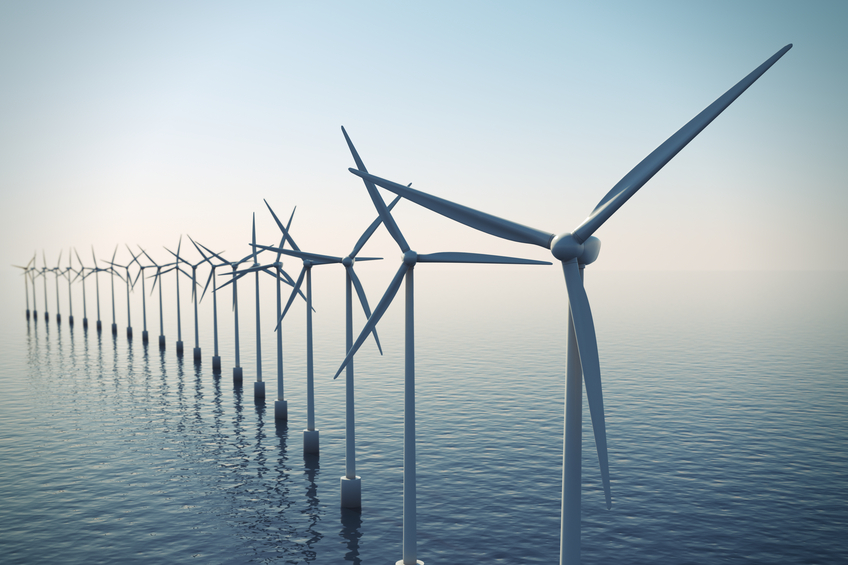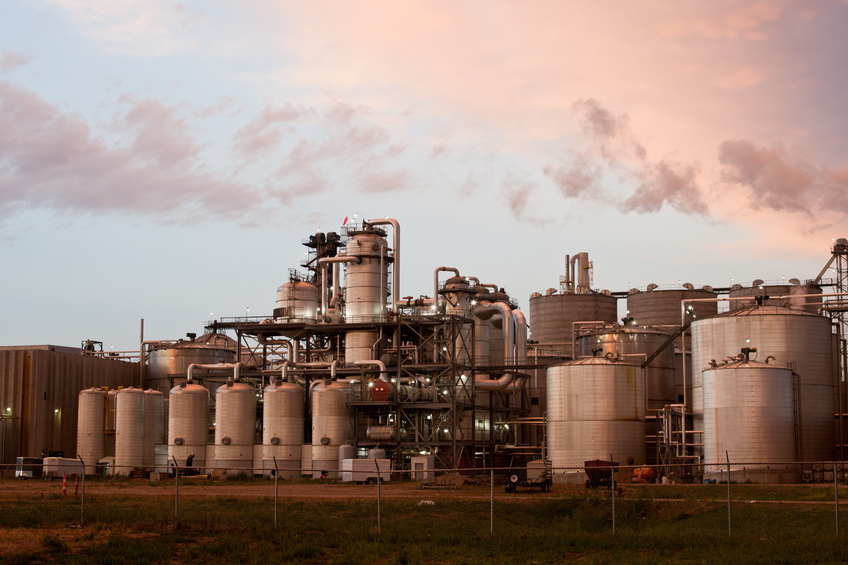Alberta Alt/Ren Energy 30 PDH Discount Package
Wind Energy Design and Fundamentals (R06-004)
Introduction to Geothermal Energy (R03-014)
Small Wind Electric Systems to Power Your Home (R03-017)
Guidelines for Selecting Cool Roofs (M02-065)
Understanding Solar Photovoltaic System Performance (R02-018)
Biodiesel Handing and Use Guide (R04-008)
Re-Powering Critical Infrastructure (R02-017)

This online engineering PDH course presents the fundamental principles behind the workings of a solar PV system, use of different components in a system, methodology of sizing these components and how these can be applied to building integrated systems. It includes detailed technical information and basic step-by-step methodology for design and sizing of off-grid solar PV systems.
The sun delivers its energy in two main forms: heat and light. There are two main types of solar power systems, namely, solar thermal systems that trap heat to warm up water and solar PV systems that convert sunlight directly into electricity (the latter being the focus of this course). Direct or diffuse light (usually sunlight) shining on the solar cells induces the photovoltaic effect, generating DC electric power. This DC power can be used, stored in a battery system, or fed into an inverter that converts DC into alternating current “AC”, so that it can feed into one of the building’s AC distribution boards (“ACDB”) without affecting the quality of power supply.
Several factors and aspects are taken into consideration when designing a solar PV system which will be discussed in this course.
This 8 PDH online course is applicable to electrical & mechanical engineers, energy & environment professionals, architects & structural engineers, and other professionals looking to enter the solar industry, or interact with solar projects in their current line of work.
This P.Eng. continuing education course is intended to provide you with the following specific knowledge and skills:
- Learning about the basics of PV technology
- Familiarizing with performance aspects of PV modules
- Gaining an overview of the different types of PV system configurations
- Learning about the role of inverters in PV systems
- Familiarizing with charge controllers
- Learning about the different types of batteries, their associated classifications, and key definitions
- Understanding the importance of having balanced systems
- Designing and sizing of PV systems
- Familiarizing with building integrated PV systems
Upon successful completion of the quiz, print your Certificate of Completion instantly. (Note: if you are paying by check or money order, you will be able to print it after we receive your payment.) For your convenience, we will also email it to you. Please note that you can log in to your account at any time to access and print your Certificate of Completion.

This online engineering PDH course provides information on wind energy and wind turbines, and discusses the operating principles of wind turbines, their key components, technology and performance features, as well as cost economics and various environmental and social aspects.
The rising concerns over climate change, environmental pollution, and energy security resulted in an increased interest in developing renewable energy, with wind energy being at the forefront.
Wind energy refers to the technology that converts the motion of air into mechanical energy, usually for electricity production. The mechanism used to convert air motion into electricity is referred to as a turbine. A turbine is a large structure with several spinning blades connected to a rotor, where an electromagnetic generator generates electricity as wind causes the blades to spin.
This 6 PDH online course is applicable to mechanical and electrical engineers, and energy specialists who are interested in learning more about the fundamentals of wind energy design.
This P.Eng. continuing education course is intended to provide you with the following specific knowledge and skills:
- Familiarizing with the basic concepts of wind energy
- Understanding the factors influencing wind energy production
- Learning about the different types of wind turbines
- Knowing the key components of wind turbines and their operating principles
- Understanding the theoretical, practical, and net energy outputs from wind turbines
- Learning about the economics of wind energy and the control schemes of wind turbines
- Gaining a general overview on the different environmental and social aspects of wind energy
Upon successful completion of the quiz, print your Certificate of Completion instantly. (Note: if you are paying by check or money order, you will be able to print it after we receive your payment.) For your convenience, we will also email it to you. Please note that you can log in to your account at any time to access and print your Certificate of Completion.

This online engineering PDH course discusses the various types of geothermal energy systems and their potential for providing for the energy needs of the country.
Geothermal energy is energy in the form of heat radiating from the Earth’s mantle. It is a sustainable, renewable, and practically inexhaustible energy source for the United States, potentially being used for electricity generation, heating, and cooling, while emitting only small amounts of greenhouse gases. Geothermal resources can be found nationwide, are “always on,” and represent a potentially vast domestic energy supply. Only a fraction of these resources have been used thus far, because of technical and non-technical barriers that constrain industry growth. In this course various types of geothermal energy systems are described, and the problems that must be solved before these systems can be widely implemented are outlined.
This 3 PDH online course is intended for civil, electrical, and mechanical engineers concerned with the future of the power industry.
This P.Eng. continuing education course is intended to provide you with the following specific knowledge and skills:
- Understanding hydrothermal resources
- Knowing how to characterize enhanced geothermal systems
- Familiarizing with geothermal heat pumps
- Understanding electric power generation
- Familiarizing with geothermal direct use
- Understanding the geothermal energy benefits
- Learning the technical and non-technical barriers to geothermal development
Upon successful completion of the quiz, print your Certificate of Completion instantly. (Note: if you are paying by check or money order, you will be able to print it after we receive your payment.) For your convenience, we will also email it to you. Please note that you can log in to your account at any time to access and print your Certificate of Completion.

This online engineering PDH course provides basic information about small wind electric systems to help you decide if wind energy will work for you.
Wind is created by the unequal heating of the Earth's surface by the sun. Wind turbines convert the kinetic energy in wind into mechanical power that runs a generator to produce clean electricity.
Can I use wind energy to power my home? More people across the country are asking this question as they look for a hedge against increasing electricity rates and a way to harvest their local wind resources. Although wind turbines large enough to provide a significant portion of the electricity needed by the average U.S. home generally require 1 acre of property or more, approximately 19.3% of the U.S. population lives in rural areas and may own land parcels large enough to accommodate a wind energy system.
This 3 PDH online course is applicable to electrical and mechanical engineers and energy professionals who are interested in learning more about small wind electric systems.
This PE continuing education course is intended to provide you with the following specific knowledge and skills:
- Familiarizing with wind energy, terminology, and basic principles of wind turbines
- Understanding the different ways to make a home more energy efficient
- Understanding how and when small wind energy systems provide a practical and economical source of electricity
- Learning about the size of wind turbines required for specific applications
- Learning about the basic parts of a small wind electric system
- Knowing where to find certified small wind turbines, as well as installation and maintenance support
- Calculating how much energy a wind electric system will generate
- Gaining a general overview of hybrid wind energy systems
Upon successful completion of the quiz, print your Certificate of Completion instantly. (Note: if you are paying by check or money order, you will be able to print it after we receive your payment.) For your convenience, we will also email it to you. Please note that you can log in to your account at any time to access and print your Certificate of Completion.

This online engineering CPD course presents an overview of cool roofs, which can help many building owners save money while protecting the environment. It illustrates how cool roofs work, what kinds of cool roof options are available, and how to determine if cool roofing is an appropriate energy efficiency option for your building.
Just as wearing light-colored clothing can help keep a person cool on a sunny day, cool roofs use solar-reflective surfaces to maintain lower roof temperatures. Traditional dark roofs can reach temperatures of 150ºF (66ºC) or more in the summer sun. A cool roof under the same conditions could stay more than 50°F (28ºC) cooler.
This 2 CPD online course is applicable to engineers, architects, designers, contractors, building owners, and all personnel interested in gaining a better understating of cool roofs.
This continuing education course is intended to provide you with the following specific knowledge and skills:
- Understanding what is a cool roof
- Learning about the different types of cool roofs
- Knowing if you should use a cool roof
- Learning about cool roof selection and application
- Knowing the precautions and considerations behind cool roofs
In this professional engineering CEU course, you need to review the Department of Energy (DOE) Publication “Guidelines for Selecting Cool Roofs”, Building Technologies Program, published on July 2010.
Upon successful completion of the quiz, print your Certificate of Completion instantly. (Note: if you are paying by check or money order, you will be able to print it after we receive your payment.) For your convenience, we will also email it to you. Please note that you can log in to your account at any time to access and print your Certificate of Completion.

This online engineering PDH course presents a performance analysis of 75 solar photovoltaic (PV) systems installed at federal sites, conducted by the Federal Energy Management Program (FEMP) with support from National Renewable Energy Laboratory and Lawrence Berkeley National Laboratory.
System data is analyzed for key performance indicators including availability, performance ratio, and energy ratio by comparing the measured production data to modeled production data. The analysis utilizes the National Renewable Energy Laboratory’s System Advisor Model (SAM), which combines a description of the system (such as inverter capacity, temperature derating, and balance-of-system efficiency) with environmental parameters (coincident solar and temperature data) to calculate predicted performance.
The measured performance metrics are useful in that they provide realistic expectations of performance, and owners of existing systems may compare their own measured performance values to the average and focus on corrective actions.
This 2 PDH online course is applicable to mechanical and electrical engineers and energy specialists who are interested in learning more about the performance of solar photovoltaic systems.
This PE continuing education course is intended to provide you with the following specific knowledge and skills:
- Familiarizing with the key performance indicators of PV systems
- Understanding the research methodology of the proposed study
- Analyzing a statistical summary of key performance indicators across a sample of PV systems and drawing conclusions
- Gaining an overview of the future steps and resources for agencies interested in improving photovoltaic system performance
Upon successful completion of the quiz, print your Certificate of Completion instantly. (Note: if you are paying by check or money order, you will be able to print it after we receive your payment.) For your convenience, we will also email it to you. Please note that you can log in to your account at any time to access and print your Certificate of Completion.

This online engineering PDH course provides an overview of biodiesel blends, the advantages of using biodiesel, precautions for use of biodiesel during cold weather, and the proper procedures for handling and use of biodiesel. This course also provides detailed information on biodiesel testing requirements and compatibility issues.
Biodiesel is a diesel replacement fuel for use in diesel engines. It is manufactured from plant oils, animal fats, and recycled cooking oils, is most commonly used as a blend with petroleum diesel in compression-ignition engines. Some of the advantages of Biodiesel are that it is renewable, can reduce greenhouse gases, compatible with new technology diesel engines, nontoxic, biodegradable, and suitable for sensitive environments.
This 4 PDH online course is intended primarily for energy, chemical, environmental, mechanical, civil and industrial engineers. Someone completing this course will gain knowledge about the use and handling of biodiesel.
This P.Eng. continuing education course is intended to provide you with the following specific knowledge and skills:
- Understanding the sources and processing of biodiesel
- Learning about the benefits and attributes of biodiesel
- Familiarizing with Physical properties of biodiesel as compared to No. 2 diesel
- Understanding the ASTM D6751 standards for biodiesel quality
- Learning about the material compatibility issues for biodiesel
- Learning about the cold-weather issues for biodiesel
- Understanding how to properly blend, store, and transport biodiesel
- Learning about the engine and equipment warranties involved with biodiesel use
- Learning about the taxes and incentives for biodiesel
- Familiarizing with basic safety, health, and environmental issues for biodiesel
- Understanding the fire safety and firefighting considerations
Upon successful completion of the quiz, print your Certificate of Completion instantly. (Note: if you are paying by check or money order, you will be able to print it after we receive your payment.) For your convenience, we will also email it to you. Please note that you can log in to your account at any time to access and print your Certificate of Completion.

This online engineering PDH course presents a methodology to identify suitable sites for the establishment of renewable energy (RE) facilities intended to support critical infrastructure in an emergency.
"RE-Powering Critical Infrastructure" presents a methodology for identifying sites—typically formerly contaminated lands, closed landfills, and mine sites—close to critical infrastructure. If a renewable energy facility were to be installed at the site, then in the event of a natural disaster disrupting the national electrical grid, the RE at the site could provide emergency back-up for the critical infrastructure. The course applies this methodology to critical infrastructure including wastewater treatement plants, drinking water treatment plants, hospitals, schools, emergency centers, cell towers, fire stations, and natural gas distribution centers.
This 2 PDH online course is applicable to civil, environmental, electrical and other engineers, concerned with renewable energy applications.
This P.Eng. continuing education course is intended to provide you with the following specific knowledge and skills:
- Familiarizing with vulnerability screening to identify RE-Powering sites located in areas that are likely to experience power outages
- Knowing how to apply proximity screening to identify RE-Powering sites near a critical wastewater treatment plant
- Learning about economic screening to identify RE-Powering sites that are economically suited for siting renewable energy
- Learning how to apply needs screening to identify RE-Powering sites most likely to meet the needs of the facility being supported
- Gaining an overview of the screening methodology of critical infrastructures other than wastewater treatment plants (WWTPs)
Upon successful completion of the quiz, print your Certificate of Completion instantly. (Note: if you are paying by check or money order, you will be able to print it after we receive your payment.) For your convenience, we will also email it to you. Please note that you can log in to your account at any time to access and print your Certificate of Completion.